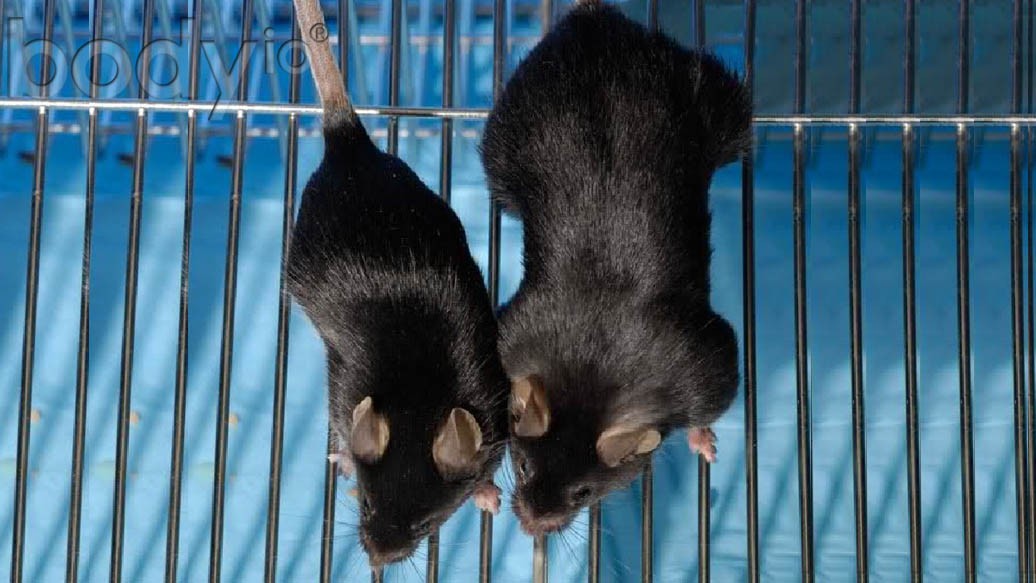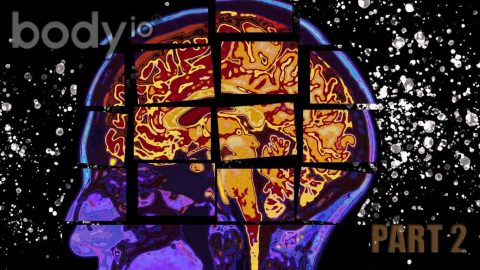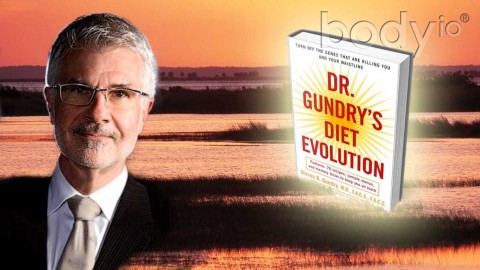More from my original research notes about the hormones that influence your fat loss and muscle gain:
Myostatin is easily one of the most exciting discoveries of the past two decades. Its name literally means “muscle-stopping chemical,” and this couldn’t be closer to the truth. Researchers found that when myostatin was absent in animals, or its action was blocked, the animals displayed massive increases in muscle mass, and decreases in fat mass[1-9]. This was a huge development for nutritionists around the world.
Most internet “experts,” however, couldn’t pick out myostatin in a lineup.
In both animals and humans, when myostatin is found in higher than normal concentrations, muscle mass is decreased[10-18]. It’s also been associated with the muscle wasting experienced in old age (sarcopenia)[19] and AIDS wasting[20].
The muscle-building and fat-burning effects of human growth hormone are thought to be caused by GH’s interference with myostatin function[21], and the muscle destroying effects of cortisol appear to be associated with higher concentrations of myostatin[22]. Muscle disuse atrophy (when muscles shrink because they’re not being used—a condition typically affecting astronauts and bedridden people) has also been associated with elevated myostatin levels[15,23]—and it may be responsible for the differences in muscle and fat mass between males and females[2].
Finally, consuming calories at less than maintenance levels—which is what most people attempt to do when dieting—also increases the concentration of myostatin in muscles, leading to muscle wasting[24]. Only one paper I’ve seen at this point came to the conclusion that myostatin didn’t cause muscle wasting—stating instead that muscle wasting seemed to cause an increase in myostatin[25].
This has been a huge discovery, and myostatin may well be the most “evil” chemical in the human body. This could potentially lead to the development of medications specifically designed for people who need to lose fat—without sacrificing valuable muscle tissue—to reduce the risk of serious illness and disease. In both The Carb Nite® Solution and Carb Backloading™, I discuss how to decrease myostatin levels, preventing its adverse effects from derailing your progress.
[expand title=”References (click to expand)”]
- Rebbapragada A, Benchabane H, Wrana JL, Celeste AJ, Attisano L. Myostatin signals through a transforming growth factor beta-like signaling pathway to block adipogenesis. Mol Cell Biol. 2003 Oct;23(20):7230-42. -3-
- McMahon CD, Popovic L, Jeanplong F, Oldham JM, Kirk SP, Osepchook CC, Wong KW, Sharma M, Kambadur R, Bass JJ. Sexual dimorphism is associated with decreased expression of processed myostatin in males. Am J Physiol Endocrinol Metab. 2003 Feb;284(2):E377-81. Epub 2002 Oct 15. -9-
- Lin J, Della-Fera MA, Li C, Page K, Choi YH, Hartzell DL, Baile CA. P27 knockout mice: reduced myostatin in muscle and altered adipogenesis. Biochem Biophys Res Commun. 2003 Jan 24;300(4):938-42. -10-
- Langley B, Thomas M, Bishop A, Sharma M, Gilmour S, Kambadur R. Myostatin inhibits myoblast differentiation by down-regulating MyoD expression. J Biol Chem. 2002 Dec 20;277(51):49831-40. Epub 2002 Sep 18. -11-
- Lin J, Arnold HB, Della-Fera MA, Azain MJ, Hartzell DL, Baile CA. Myostatin knockout in mice increases myogenesis and decreases adipogenesis. Biochem Biophys Res Commun. 2002 Mar 1;291(3):701-6. -16-
- Lee SJ, McPherron AC. Regulation of myostatin activity and muscle growth. Proc Natl Acad Sci U S A. 2001 Jul 31;98(16):9306-11. -19-
- Zhu X, Hadhazy M, Wehling M, Tidball JG, McNally EM. Dominant negative myostatin produces hypertrophy without hyperplasia in muscle. FEBS Lett. 2000 May 26;474(1):71-5. -24-
- McPherron AC, Lee SJ. Double muscling in cattle due to mutations in the myostatin gene. Proc Natl Acad Sci U S A. 1997 Nov 11;94(23):12457-61. -27-
- McPherron AC, Lee SJ. Suppression of body fat accumulation in myostatin-deficient mice. J Clin Invest. 2002 Mar;109(5):595-601. -32-
- Reisz-Porszasz S, Bhasin S, Artaza JN, Shen R, Sinha-Hikim I, Hogue A, Fielder TJ, Gonzalez-Cadavid NF. Lower skeletal muscle mass in male transgenic mice with muscle-specific overexpression of myostatin. Am J Physiol Endocrinol Metab. 2003 Oct;285(4):E876-88. Epub 2003 Jun 24. -2-
- McCroskery S, Thomas M, Maxwell L, Sharma M, Kambadur R. Myostatin negatively regulates satellite cell activation and self-renewal. J Cell Biol. 2003 Sep 15;162(6):1135-47. Epub 2003 Sep 08. -4-
- Joulia D, Bernardi H, Garandel V, Rabenoelina F, Vernus B, Cabello G. Mechanisms involved in the inhibition of myoblast proliferation and differentiation by myostatin. Exp Cell Res. 2003 Jun 10;286(2):263-75. -6-
- Zimmers TA, Davies MV, Koniaris LG, Haynes P, Esquela AF, Tomkinson KN, McPherron AC, Wolfman NM, Lee SJ. Induction of cachexia in mice by systemically administered myostatin. 2002 May 24;296(5572):1486-8. -12-
- Rios R, Carneiro I, Arce VM, Devesa J. Myostatin is an inhibitor of myogenic differentiation. Am J Physiol Cell Physiol. 2002 May;282(5):C993-9. -13-
- Reardon KA, Davis J, Kapsa RM, Choong P, Byrne E. Myostatin, insulin-like growth factor-1, and leukemia inhibitory factor mRNAs are upregulated in chronic human disuse muscle atrophy. Muscle Nerve. 2001 Jul;24(7):893-9. -20-
- Taylor WE, Bhasin S, Artaza J, Byhower F, Azam M, Willard DH Jr, Kull FC Jr, Gonzalez-Cadavid N. Myostatin inhibits cell proliferation and protein synthesis in C2C12 muscle cells. Am J Physiol Endocrinol Metab. 2001 Feb;280(2):E221-8. -21-
- Thomas M, Langley B, Berry C, Sharma M, Kirk S, Bass J, Kambadur R. Myostatin, a negative regulator of muscle growth, functions by inhibiting myoblast proliferation. J Biol Chem. 2000 Dec 22;275(51):40235-43. -22-
- Kirk S, Oldham J, Kambadur R, Sharma M, Dobbie P, Bass J. Myostatin regulation during skeletal muscle regeneration. J Cell Physiol. 2000 Sep;184(3):356-63. -23-
- Yarasheski KE, Bhasin S, Sinha-Hikim I, Pak-Loduca J, Gonzalez-Cadavid NF. Serum myostatin-immunoreactive protein is increased in 60-92 year old women and men with muscle wasting. J Nutr Health Aging. 2002;6(5):343-8. -33-
- Gonzalez-Cadavid NF, Taylor WE, Yarasheski K, Sinha-Hikim I, Ma K, Ezzat S, Shen R, Lalani R, Asa S, Mamita M, Nair G, Arver S, Bhasin S. Organization of the human myostatin gene and expression in healthy men and HIV-infected men with muscle wasting. Proc Natl Acad Sci U S A. 1998 Dec 8;95(25):14938-43. -26-
- Liu W, Thomas SG, Asa SL, Gonzalez-Cadavid N, Bhasin S, Ezzat S. Myostatin is a skeletal muscle target of growth hormone anabolic action. J Clin Endocrinol Metab. 2003 Nov;88(11):5490-6. -1-
- Ma K, Mallidis C, Bhasin S, Mahabadi V, Artaza J, Gonzalez-Cadavid N, Arias J, Salehian B. Glucocorticoid-induced skeletal muscle atrophy is associated with upregulation of myostatin gene expression. Am J Physiol Endocrinol Metab. 2003 Aug;285(2):E363-71. Epub 2003 Apr 29. -5-
- Zachwieja JJ, Smith SR, Sinha-Hikim I, Gonzalez-Cadavid N, Bhasin S. Plasma myostatin-immunoreactive protein is increased after prolonged bed rest with low-dose T3 administration. J Gravit Physiol. 1999 Oct;6(2):11-5. -29-
- Jeanplong F, Bass JJ, Smith HK, Kirk SP, Kambadur R, Sharma M, Oldham JM. Prolonged underfeeding of sheep increases myostatin and myogenic regulatory factor Myf-5 in skeletal muscle while IGF-I and myogenin are repressed. J Endocrinol. 2003 Mar;176(3):425-37. -8-
- Wehling M, Cai B, Tidball JG. Modulation of myostatin expression during modified muscle use. FASEB J. 2000 Jan;14(1):103-10. -25-
[/expand]












